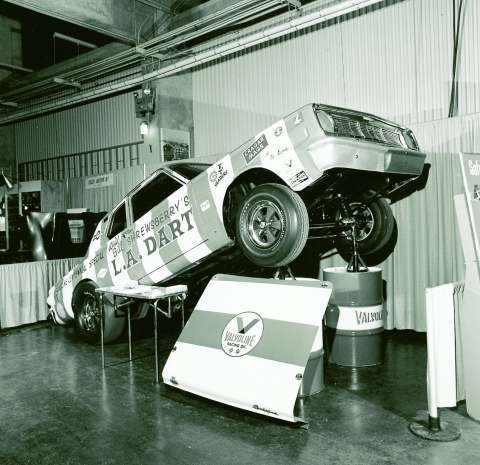SEMA Show Still Cruisin' After Five Decades

Fifty years ago, about 2,000 attendees and 80 exhibitors gathered under the grandstands at Dodger Stadium in Los Angeles for the first Speed Equipment Manufacturers Association (SEMA) trade show.
The exhibits that year consisted mainly of racing equipment and products that enhanced the performance and safety of high-performance competition automobiles. The show was managed by automotive publisher Petersen Publishing and a 10’x10’ exhibit space cost $200.
The next year, the show moved to the Anaheim Convention Center, before relocating to Las Vegas in 1977. Now known as the Specialty Equipment Market Association, it’s the longest consecutively running show in Vegas.
“I’m told that it was a controversial move at the time, as Las Vegas wasn’t considered a convention destination,” said Peter MacGillivray, SEMA’s vice president of events and communications.
He added, “The chairman of our show committee persisted and moved the show. He’s nearly 100 years old and still works the show each year as an exhibitor!”
Today’s show floor features aftermarket products for the automotive, truck, SUV, powersports and RV markets, in 12 focused sections ranging from collision repair to restoration to racing and performance.
Not surprisingly, the show is a magnet for celebrities, which in 2015 included NASCAR and Indy drivers, TV hosts, a pro wrestler, and legendary custom car designers. It also made number five on the 2015 list of TSNN Top 250 shows.
From the beginning, there was a strong commitment to small business owners. Today with over a million net square feet of exhibit space and more than 2500 exhibitors, the SEMA Show is the largest annual gathering of small business in the U.S.
This commitment also is reflected in an extensive New Products Showcase that features nearly 2500 newly-introduced parts, tools and components in 35,000 square feet.
The SEMA Show also enjoys a high level of loyalty from exhibitors. MacGillivray said there are a few dozen exhibitors who have been there since the first show. “If you reviewed the Fortune 100 list from 50 years ago and the SEMA Show exhibitor list, you’d find more companies still on the SEMA list as the Fortune list,” he added.
Over the years, the show has become more experiential. For the 50th anniversary show this November, there will be three ride-and-drive race tracks outside the Las Vegas Convention Center (LVCC), numerous media studios (the show generated over a billion impressions in 2015), and the popular SEMA Cruise and after-party.
The Cruise was added in 2011 and features hundreds of hot rods, monster trucks, and all the other specialty vehicles exiting the show floor at the close of the show on Friday.
While the show is open to the trade only, the general public is invited to line the streets around the LVCC to view the parade, no badge required. Then the vehicles gather at SEMA Ignited, a ticketed after-party for thousands, which includes food trucks, music, entertainment, celebrities, custom builders and more.


Add new comment